FOCUSED ON AG. FOCUSED ON YOU.
March 2023

FOCUSED ON AG. FOCUSED ON YOU.
March 2023

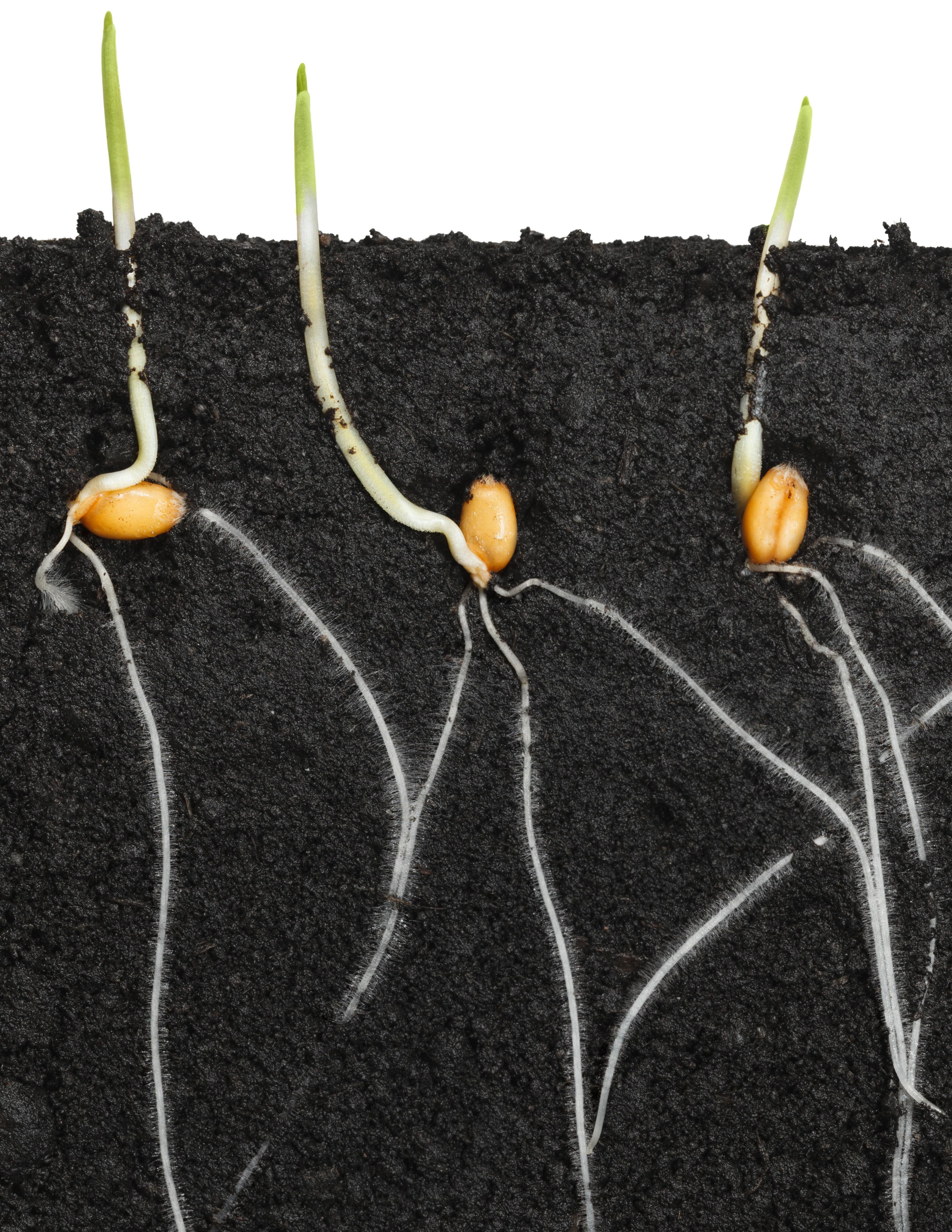

Agriculture is an industry filled with variability and volatility. Right when you think you have it all figured out, an event happens that changes everything. I think it is fair to say we have witnessed a lifetime’s worth of volatility over the past three or so years. Whether it is a global pandemic, trade war, drought, or natural disaster, we have experienced a lot. Despite what we have been through, optimism and opportunity are key themes as I talk with farmers and ranchers this winter.
As a mission-driven, farmer-owned cooperative that is focused on your success, we need to be positioned
to help you through all the ups and downs while meeting both challenges and opportunities as they arise. Providing learning and skillbuilding opportunities at events like our regional AgFocus meetings and AgFocus Conference serves dual purposes by passing along the latest agricultural updates and allowing a time when we can connect with you. We also greatly appreciate the time that many of you have invested in serving on our customer focus panels and our young farmer advisory groups. Your guidance and input are critical for the short-term success of your cooperative and our long-term relevance.
One key difference between ourselves and other lenders is our board representation. When you do business with us, you have an opportunity to participate at the board level. We are making changes that allow for greater participation by our members in running for a board seat. Look for more information on this change on page five.
A truly successful business is defined by the value it creates. We have been diligently making investments throughout our cooperative. From increased staffing, and new technology, to outside collaborations, we want to be the best total solution for those that we serve.
All that we are able to accomplish is made possible thanks to the tireless work and dedication of our staff. Words cannot express my
gratitude for the amazing job that is being done in our branches and by our corporate team. With the investments we are making comes change. Learning a new process or working with a new program is not always easy. However, the highest level of customer service is being maintained throughout our association. Whether it is Minot, Hallock, Litchfield, Wausau, or any of our other 41 offices, you can be assured our team is top-notch.
At the end of the day, AgCountry Farm Credit Services stands as a resource to farmers, ranchers, agribusinesses, and rural residents. Please lean on us to help you overcome any variability or volatility you may be facing.
Sincerely,
Marc Knisely, President & CEO
701-499-2559
Marc.Knisely@AgCountry.com
Farmers and ranchers witnessed expenses rise significantly in 2022, cutting into potential profits. Member-owners at AgCountry Farm Credit Services will soon be able to better combat these costs with a cash dividend payment totaling more than $83.5 million.
This is the fourth year in a row member-owners have received a dividend of one percent on all eligible business. Payments will be made in March 2023.
“Our ability to return money to farmers, ranchers, and agribusinesses demonstrates the power of the cooperative,” said AgCountry Board Chair
Greg Sabolik. “Our focus is to support members, agriculture, and our rural communities. We continue to be proactive in finding ways to help fellow producers achieve their financial goals.”
More than $418 million has been paid to members since the patronage program began in 2014.
“We believe that if we can help farmers succeed – our cooperative will continue to grow and be here to assist future generations,” states Marc Knisely, president and CEO of AgCountry. “This cash dividend follows up on recent actions we have taken to keep more money at the farm level.”
AgCountry’s patronage program grants the Board of Directors the ability to distribute a portion of the association’s net income to its member-owners when financial conditions allow for it.
*Future cash dividends are not guaranteed.

As cooperatives grow and change, it is also important for a cooperative’s governance structure to evolve. After careful consideration, the AgCountry Board of Directors approved an update to the Areas utilized for nominating potential candidates to run for the Board of Directors (“Director Nomination Area” or “Area”) in January 2023.
Starting with the 2023 Director Election, the number of Director Nomination Areas will be reduced from seven to four. Specifically, Minnesota will move from three Areas to one, and North Dakota will move from three Areas to two. There is no change to Wisconsin.
These changes expand the size of the Director Nomination Areas and:
• Create more equality as it relates to director representation per member-owner.
• Provide flexibility for the Nominating Committee as it searches for potential candidates to nominate for the Board.
• Provide more opportunities for interested candidates to seek board positions, and

• Keeps states together for legislative and advocacy purposes.
Elected Directors must still be voting stockholders and will continue to serve staggered terms of four years, with elections occurring annually. A map of the new Director Nomination Areas is to the right:

Do you want to get more involved with AgCountry?
Here is your opportunity! The 2023 Nominating Committee will have its first meeting on March 21, 2023, to seek candidates for AgCountry’s 2023 Director Elections and 2024 Nominating Committee.
Director positions in Area 1 (Eastern North Dakota), 2 (Minnesota), and 3 (Wisconsin) will be up for election.
If you are interested in serving on either the Board of Directors or the 2024 Nominating Committee, please use the QR code below to complete a candidate interest form. All completed candidate interest forms will be provided to the Nominating Committee for their consideration.
AgCountry’s Starting Gate program is embarking on new business ventures with the future of agriculture. The purpose of Starting Gate is to help young or beginning farmers and ranchers get started in their farming careers.
We understand access to competitively priced capital and the traditional down payment requirements are obstacles young or beginning farmers and ranchers face when starting their farm business. The Starting Gate program was created to solve these challenges through a combination of relaxed down payment requirements and underwriting, competitive interest rates, and limited fees.
Educational and Financial Services incentives are offered, which range from invitations and/ or scholarships to attend training and educational seminars, reduced tax and farm accounting service fees, and reduced succession and retirement consultation fees.
AgCountry understands the importance of getting the next generation started and is focused on being a long-term partner in assisting with the success of the business. As an ag co-op, our focus is providing value that benefits young or beginning farmers and ranchers.
We explore all options – both internally and externally – to provide the best possible solution to young or beginning farmers and ranchers. This means partnering with FSA on direct and participation loan financing options as well as FSA Guarantees, when appropriate. Utilizing state programs such as the Minnesota Rural Financing Authority (RFA) and the Bank of North Dakota are also options that we explore when discussing loan packages.
AgCountry is dedicated to the success of your operation and will work with you to meet your unique financing and financial service needs. We take pride in building longterm relationships by keeping our focus on you.
If you are interested in learning more about AgCountry’s Starting Gate program, please talk to your loan officer. They will be available to walk you through your options.
*Based on availability.
The President and CEO’s responsibility when leading a Farm Credit Services cooperative is to provide strategic leadership by working with the Board of Directors and the Executive Leadership Team to establish goals, plans, and policies.


Marc Knisely, president & CEO of AgCountry, invests his time advocating for member-owners, learning about current trends in agriculture, and engaging with customers to hear feedback, understand their operations, and ensure our cooperative is working to serve agriculture and rural America.
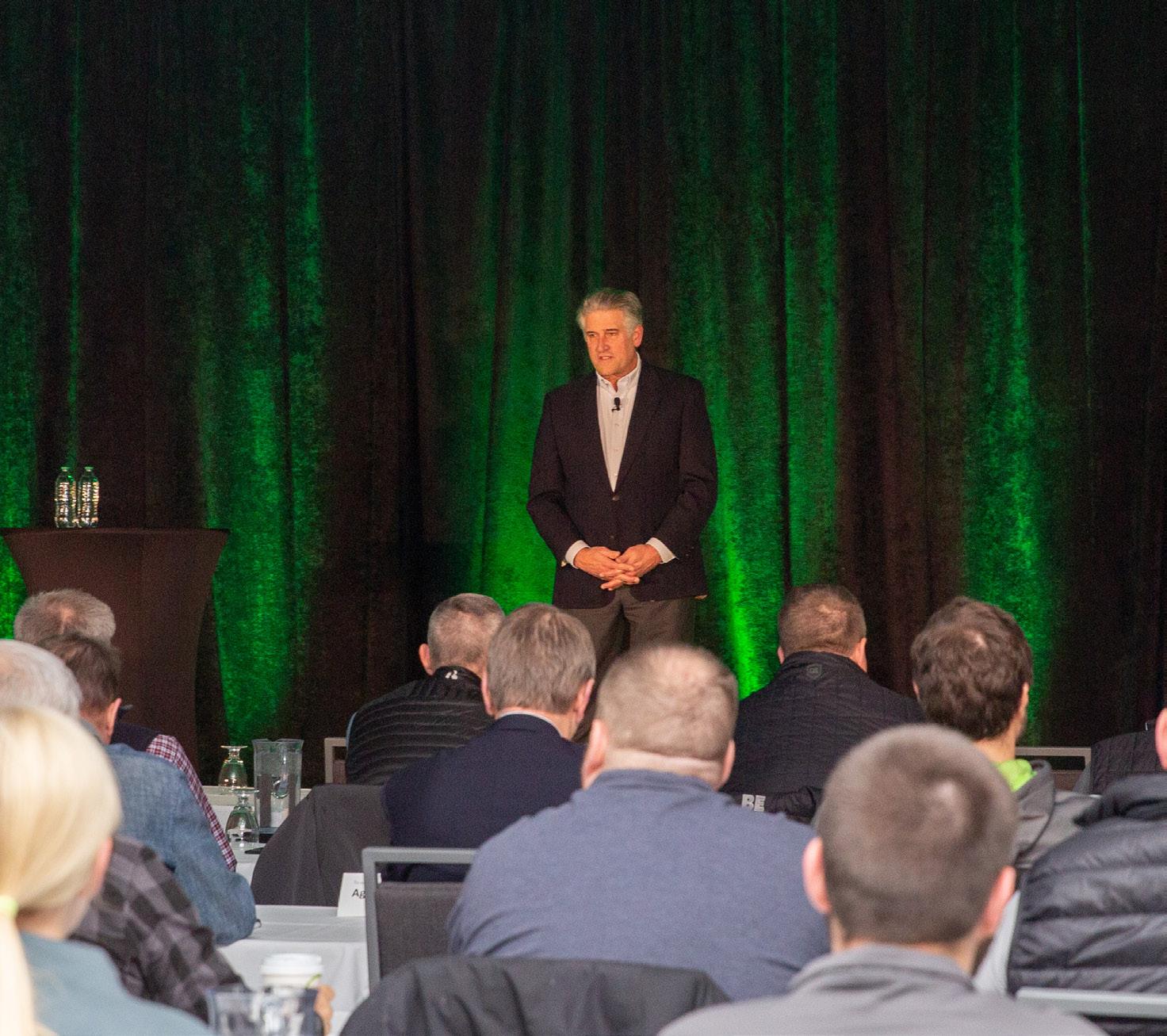
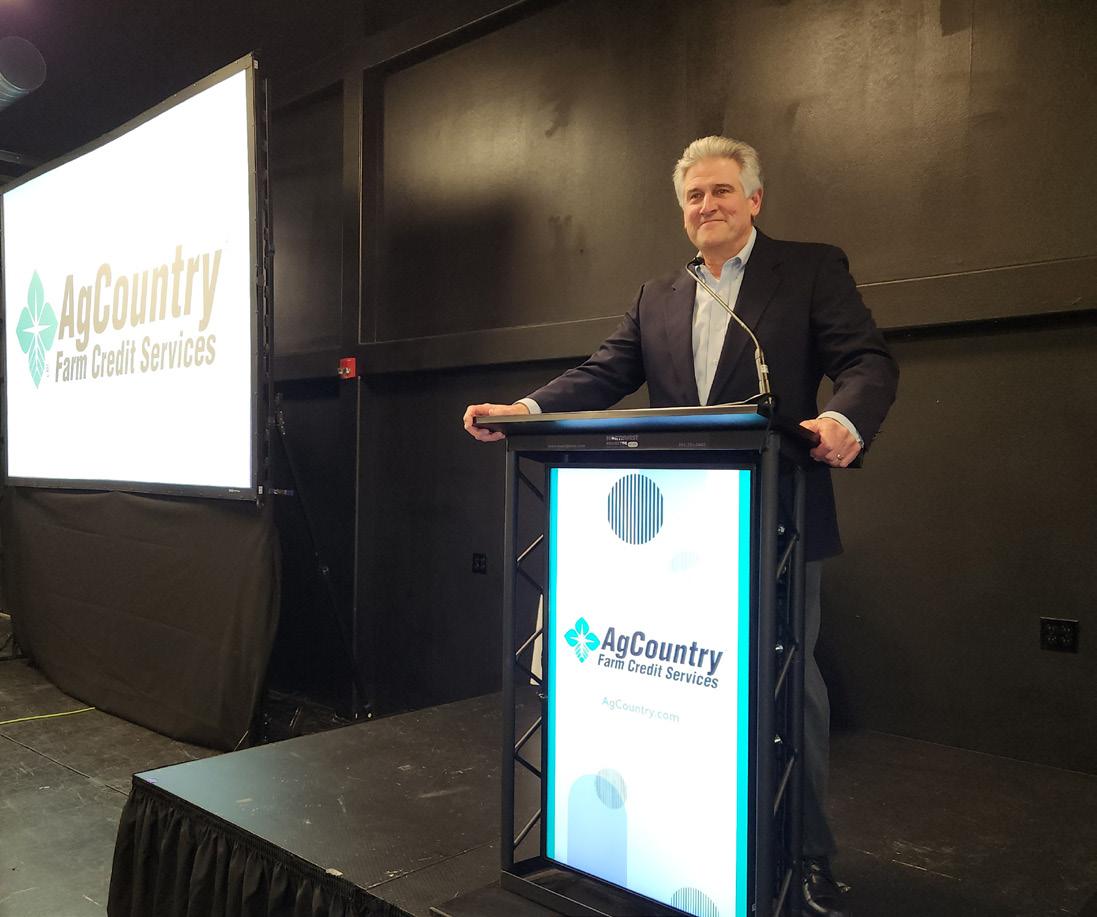
Marc encourages member-owners to reach out to him or your Board Members with questions, concerns, and feedback.
Marc Knisely: Marc.Knisely@AgCountry.com
Board of Directors Email in Profile: AgCountry.com > About Us > Board Members


Eric Snodgrass is the Principal Atmospheric Scientist for Nutrien Ag Solutions, where he develops predictive, analytical software solutions to manage weather risk for global production agriculture. He provides frequent weather updates that focus on how high-impact weather events influence global agriculture productivity. His current research uses machine learning to better understand field-level weather impacts on yields in the U.S. and to increase confidence in long-range weather prediction. He presents his research as a featured speaker at over 50 conferences annually where he provides logistical guidance and solutions to weather sensitive financial institutions, farmers, commodity traders, and other stakeholders.
Q A A
It’s a better story for the Northern Plains and upper Midwest. Long-range forecasts continue to give us a decently active clipper system into March. That typically means we keep colder temperatures around, which gives us better chances to keep the snow pack. That snow pack is everything. There are up to two inches of liquid in that snow now. We want it to be there to come out in the spring and melt into the topsoil. Overall, it’s a positive message. But understand that positive messages can change on a dime in the Northern Plains.
LARGE
OF MINNESOTA AND NORTH DAKOTA HAVE SOME DEGREE OF DROUGHT WHILE WISCONSIN LOOKS PRETTY GOOD. COULD THESE STATES SEE ANY RELIEF?
Yes. Part of that relief is in the snow pack right now. The other component is we are anticipating a relatively active spring – think May into June –with severe storms, which is normal. I think the drought will continue in states to the south of us and not necessarily here as much.
That’s always the big concern in this part of the country. At this point, I’d say there is a risk of that occurring this year. Part of that risk is that we are losing La Nina. When you get rid of La Nina, it tends to give you a more active spring. That’s not a guarantee, but it tends to give you a better flow that produces those thunderstorm events that steal days away and keep us from getting into the field. However, I do not see a repeat of last winter into spring where we saw a non-stop jet stream flow over the top of us. That kept us very cold throughout spring. When those windows open to plant, they shut about as quickly as they opened in 2022.
It’s past peak and that’s good. We were hoping we wouldn’t complete the third year of La Nina or begin a fourth. There is no precedent on record for a fourth year. The good news is that the water temperatures are becoming warmer off the coast of South America, but there is not a single forecast out there from a national forecasting agency like the National Weather Service or the Bureau of Meteorology that isn’t saying La Nina will fade. A fading La Nina is a positive signal for a lot of people for the upcoming year. I believe commodity markets will see that as positive as well.
Sometimes. Some of the biggest El Nino events on record, like the one we saw in 2015 to 2016 and 1997 to 1998, followed an abrupt end to La Nina. That doesn’t mean it always happens that way, but there are a lot of folks out there asking if the atmosphere is going to try and make up for lost time with three years of strong La Nina by sending El Nino by fall? There is a possibility of that, but more often than not the models overpredict what is going to happen. I hope this isn’t the case. I hope we spend 18 months in neutral conditions, which would be really great across North America.
It typically means less heat stress in the summer with more precipitation from thunderstorms. Changes in the trajectory of the jet stream running southwest to northeast tend to mean you draw more moisture from the Gulf. It is important to note that we have had a drought in El Nino years. However, historical numbers say more often than not we have better conditions.
Q Q A A
I think we should get comfortable staring at jet stream maps! Kidding aside, if the atmosphere is going to telegraph what it’s going to do next, the first signs will appear in the jet stream. What we don’t want is for the jet stream to slow down and get bunched up. If it does, you end up getting into situations where the pattern sticks around for two to four weeks. That’s when you have major precipitation events, which can be killers and cause damage. We also don’t want the ridge to sit over us. If it does, we’ll be smoked out and it will be hot.
If you look at what the preseason risk is for Minnesota, North Dakota, and Wisconsin in having drought develop, there are always a few things to think about. First, what is the soil moisture and what is it projected to look like by April? Secondly, is it El Nino or La Nina? If you have low soil moisture in winter and you’re coming into spring without it revived, your risk of drought is high for the rest of the year. But, if you have that in combination with La Nina, then your risk really goes up. Again, it appears La Nina is fading, but we have to keep an eye on it.
Life can be complicated. Get help with all of life’s questions, issues, and concerns with LifeWorks. Anytime, 24/7, 365 days a year.

The LifeWorks Resource Program is a confidential support service that can help you and your depedents solve a wide range of problems and challenges in your lives, at no cost to you. In our increasingly fast-paced world, you may find it challenging to take care of yourself while balancing responsibilities at work with obligations at home. The LifeWorks Resource Program offers timely, professional assistance and support to help manage all of life’s complexities. The LifeWorks Resource Program’s Care Access Center can be contacted toll-free, 24 hours a day, 7 days per week so that you can access support when you need it.
Your LifeWorks Resource Program is designed to provide professional support and consultation to assist you in meeting challenges and resolving work/life issues. This is a short-term, solution-focused counseling and consulting service.

LifeWorks offers support with mental, financial, physical, and emotional well-being. Whether you have questions about handling stress at work and home, parenting and childcare, managing money, or health issues, you can turn to LifeWorks for a confidential service that you can trust.
Calls will be answered by a caring professional who can help you choose a support option that best suits your needs and learning style. If you are experiencing a crisis situation, you can speak to a counselor right away. LifeWorks counselors are experienced Masters level professionals who will understand your concerns and guide you to resolution. You can rest assured that you’ll be connected to a counselor or consultant that can provide the support you need. No matter what the nature of your issue, or how overwhelming it may seem, the wide scope of expertise available to you through your LifeWorks Resource Program is there to support you as
Leverage our exclusive Optimum tool to sift through thousands of scenarios and find the right plan for your acres and budget. With Optimum, you’ll get a customized report that focuses on:
• Highest net indemnity over time
• Best cash flow over time
• Most bushels to forward market
• Lowest paid farmer premium
Ag-focused tools and resources to explore your insurance options. Contact your local AgCountry insurance specialist and ask how Optimum can work for you.
AgCountry.com/Insurance
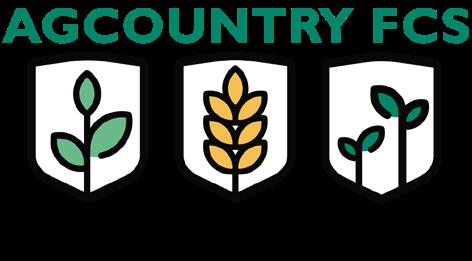
Understanding financial ratios is a key component to your operation’s success. When you visit the doctor’s office and they take your blood pressure, the nurse usually rattles off a number: “115/75.” You may look at them and ask, “Well, is that good or bad?” You can think of financial ratios with the same mindset, they measure your financial health.
Understanding financial measures and ratios will help you better understand the shape your operation is in and what you can do to improve or capitalize on it. The following measures and ratios are popular when dealing with a lender:

You will likely hear lenders discuss working capital more than any other portion of your balance sheet. This is simply your current assets minus your current liabilities. Working capital indicates the liquidity of your business, or rather, your “skin in the game.” These numbers are found in the top third of your balance sheet.
• Current assets include cash on hand, crop and market livestock inventory, hedging accounts, prepaid expenses, and accounts receivable. Anything that can be converted to cash within 12 months is considered a current asset.
• Current liabilities include accounts payable, operating loans and lines of credit, and any accrued interest and term payments due within 12 months.

Working capital is also viewed as your safety net in times of shortfalls or low margins during financially stressful years and provides flexibility when opportunities present themselves, like that quarter of land you’ve been wanting to buy for the last 20 years.
This measures the operating capital available against business size. To calculate, take working capital divided by gross revenues . Every operation is different, and this measure is used to develop a better picture of individual operations, rather than just
analyzing straight dollar amounts of working capital. For example, $1 million in working capital might be a lot for a 1,000-acre farm that generates roughly $850,000 in gross revenues. But for a 15,000-acre farm that generates roughly $12,787,500 in gross revenues, $1 million in working capital is not enough in the eyes of a lender. The ratios are 118% and 8%, respectively. The higher, the better this ratio.
Knowing whether your operation generated enough income to cover current interest expenses and all intermediate and long-term debt payments is important. That is exactly what this ratio does. Your operation may have an A+ report card for profitability, but if you have too many debt obligations, your operation will go backward trying to meet those obligations. This ratio is calculated by taking net farm income from operations (minus income taxes and owner withdrawals) divided by total debt repayment obligations. When looking at your own operation, where does this ratio stand? If your ratio is 0.88, it can be read as “you had 88 cents to pay back every dollar of debt.” The higher ratio the better for this one. Anything over one means you could meet your debt obligations and still have change left in your pocket.
Gauging a farmer’s ownership or share in the business can be a key indicator of financial health. This ratio compares total farm debt to total farm assets. Typically, a lender would like to see this ratio at 0.50 or greater when an operator is looking for financing. Other factors do come into play, such as age and outside support, but 50% owner equity is a good rule of thumb.
This ratio isn’t a huge driver in big credit decisions for a lender, but it is a good tool to measure efficiency. The operating expense ratio shows the proportion of farm income used to pay operating expenses, minus depreciation and interest expense. This is calculated by taking total operating expenses minus
depreciation and amortization and dividing it by gross farm revenue. Look at your own operation. Do you have a ratio closer to 0.72 or 1.05? What do these numbers mean? If your ratio is 0.72, it can be translated to you spending 72 cents to make one dollar. The lower ratio, the better.
At the end of each fiscal year, compare your operation’s ratios to the prior year and understand the trends. There isn’t just one ratio to indicate a successful operation, but rather a combination of numbers. Understanding what these numbers tell you will set you apart from your neighbors.
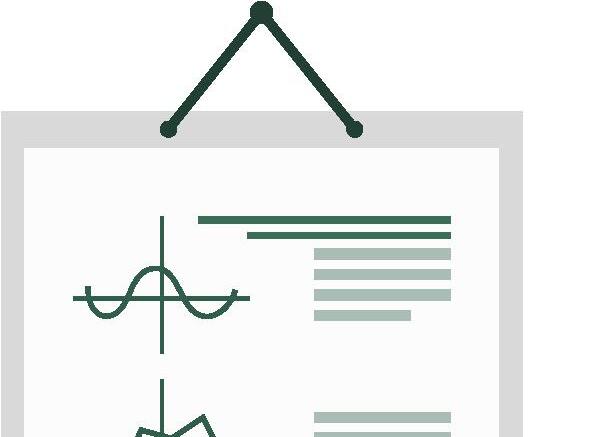
Get a complete understanding of your ratios by contacting your loan officer or visiting your local AgCountry office.

Perfect seedbed conditions and a promising start to a crop can be gone instantly by frost, insects, and other perils. Knowing your insurance options is important when the crop is still early. We will touch upon a few aspects of your multi-peril crop insurance (MPCI) policy, so you are prepared when a weather-related incident impacts your farm.
Special provisions in an MPCI policy allow for replanting of your crop if something goes wrong the first time. If your crop is killed off or struggling, you can destroy all or portions of your field and be compensated for your loss. The most important thing to remember if you find yourself in this situation is to contact your agent before you fire up the tractor and seeder again.
If you want to destroy and replant the same crop,
your agent needs to contact your insurance company so an adjuster can properly inspect and consult with the producer about their plans. If you replant acres without these prior approvals, you will not be compensated. Your replant option refers to reseeding the same crop in the same physical location. However, a different variety may be acceptable. Planting a different crop is not considered a replant, and in that case, different insurance rules are in place to keep coverage on the second crop.
It is acceptable to replant if it is within 10 days of the crop’s Final Plant Date. Keep in mind, certain criteria must be met:
• It must be physically possible to replant the crop;
• Once the crop is replanted, seed emergence of a healthy plant needs to be likely; and Field conditions must promote the maturity of the crop.
To get an indemnity payment, you must meet the 20/20 rule (20 acres or 20% of planted acreage). Note, there are several reasons you will not receive a payment:


• The adjuster’s appraisal exceeds 90% of your crop insurance guarantee.
• The damaged crop was planted before the Earliest Plant Date. Payment was already received on a replant indemnity.
• The adjuster finds it’s not practical to replant.
Replant payments vary by crop but follow similar guidelines. For example, wheat replant payments will pay the lesser of 20% of your guarantee per acre or four bushels multiplied by the current spring crop insurance price. Soybean replant will pay 20% of your guarantee or three bushels per acre, whichever is less. Some of you may be asking, how quickly can insurance adjusters react and get out to my farm? Rest assured, during this crucial time of year when planting windows shrink, crop insurance companies have adjusters ready. So don’t forget to contact your AgCountry insurance specialist to get the replant process moving as soon as possible!
Now that your investment has made it through the critical young stage and is on its way to producing a high-yielding crop, you may consider adding protection on top of your MPCI to safeguard some profit. AgCountry insurance specialists understand the largest threats on the farm. Hail insurance is a private product, and we work with several companies to ensure we are providing our customers with the best service possible.
Some producers may feel they can’t afford hail insurance, and overlook it.. We work with producers to customize a hail insurance plan that is affordable. A high deductible plan could give you protection for that big hail event. You may be able to cover your crops for a few dollars per acre!
Hail insurance provides many options and can be obtained the day you need it! For instance, if it’s later in the growing season and you have a good crop in the field, hail coverage is just a phone call away. Within two hours of your agent sending an email, you can have peace of mind when the storm clouds are rolling through.
Popular hail insurance plans include Basic and 10% deductible coverage, but Companion hail plans have recently received a lot of attention. A Companion 2-10 plan, for example, has a 10% deductible and a multiplying factor of two. When your hail damage crosses a 20% damage threshold, the multiplier kicks in. At 30% damage, Companion 2-10 will pay out 40% of your indemnity. At 45% damage, it pays 60%, and when damage reaches 60%, your full indemnity is paid.

The amount of coverage per acre you invest can vary depending on where you want protection. One field of corn can be covered while leaving another field eight miles away without protection. It’s totally up to you. Don’t let that flash hail storm get between you and a great year!
We wish you success with all your spring planting. If you would like to further discuss your options, AgCountry insurance specialists stand ready to help with your crop insurance needs.
Every farmer and rancher should have leasing in their financial toolbox. From cash preservation to tax advantages of an accelerated write-off, leasing offers an ideal solution to help grow your farming operation in both the near and long term.
AgCountry Farm Credit Services partners with CoBank Farm Credit Leasing, one of the largest providers of lease financing in rural America, to supply you with the latest information and expertise on agricultural leasing. Through this partnership, we offer flexible lease payment structures on equipment, vehicles, packaging and processing lines, and all types of agricultural facilities, including machine sheds, grain storage, livestock and dairy buildings, greenhouses, and farm shops.
The partnership brings decades of experience in structuring leases
for unique assets, like solar arrays and commercial buildings. Leasing unique assets provides tremendous tax advantages when properly structured. For instance, farmers may consider a solar array to save on their electric bill and could benefit from a lease where the tax credits are passed back in the form of a low or negative lease rate, making the total cost to own less than the acquisition cost. Similarly, with a properly structured commercial building lease, farmers can accelerate the write-off of a 39.5-year property in seven or ten years. Our extensive investment in developing knowledge and leasing options gives you the flexibility and advantages you need when deciding to lease.
Whether you’re looking to upgrade your equipment or expand your current operation, here are some key things to think about when considering whether to buy or lease your next agricultural asset:
Leasing a 20-year property, like a pole barn, allows the farmer to deduct 70-80% of the facility in five to seven years as a lease expense on their Schedule F, similar to land rent. Deducting lease payments provides a
constant deduction over the life of the lease, rather than taking depreciation in a lump sum with limited depreciation deductions in future years.
By utilizing a lease, a farmer can know exactly what expenses to plan for over a longer period. As every farmer knows, it’s best to take the tax advantages when you have the opportunity.
When planning to transition your farming operation to the next generation, leasing is a key tool to consider. With the uncertainty around potential changes in estate taxes and the corporate tax rate, there is no better time than now to consider leasing. Leasing allows farmers to seamlessly transfer leased assets to the next generation, keeping the assets out of the estate, and offering previously mentioned tax benefits. At the end of the lease, when the residual comes due, the next generation can purchase the assets for the residual amount, and ownership of the assets transfers directly from the leasing company to the next generation. This offers an incredible tax advantage for future generations.
Farmers or businesses may not have the cash on hand for a down payment on a loan, or may want
to use the capital elsewhere. With a lease, farmers can preserve working capital and save money for other expenses. Leasing can provide 100% financing with no down payment required. Often, the only cash required upfront is the first lease payment, which is significantly less than a down payment on a loan. This helps save money while still obtaining the equipment or facility needed to grow their business.
For farm businesses, the value of equipment, bins, or buildings lies in using it. With AgCountry Farm Credit Services and CoBank Farm Credit Leasing, you can work with any manufacturer, negotiate the best price, and we can provide the financing needed to help run your business effectively and profitably.
Learn how to take advantage of leasing benefits by reaching out to your local AgCountry branch or visiting AgCountry.com.
AgCountry’s mission is to serve agriculture and rural America. A way in which we fulfill our mission is by giving back and supporting organizations, causes, and communities. In 2022, AgCountry donated nearly $1.9 million throughout Minnesota, North Dakota, and Wisconsin.
52
$1,000 High School and Upperclassmen Scholarships
Awarded
38
Grain Bin Rescue Units Donated
$349,400
Donated Through AgCountry’s Giving and Growing Program


AgCountry Farm Credit Services
P.O. Box 6020
Fargo, ND 58108
We’re returning 1% on all eligible business in cash dividends this March.
That’s the power of the co-op.